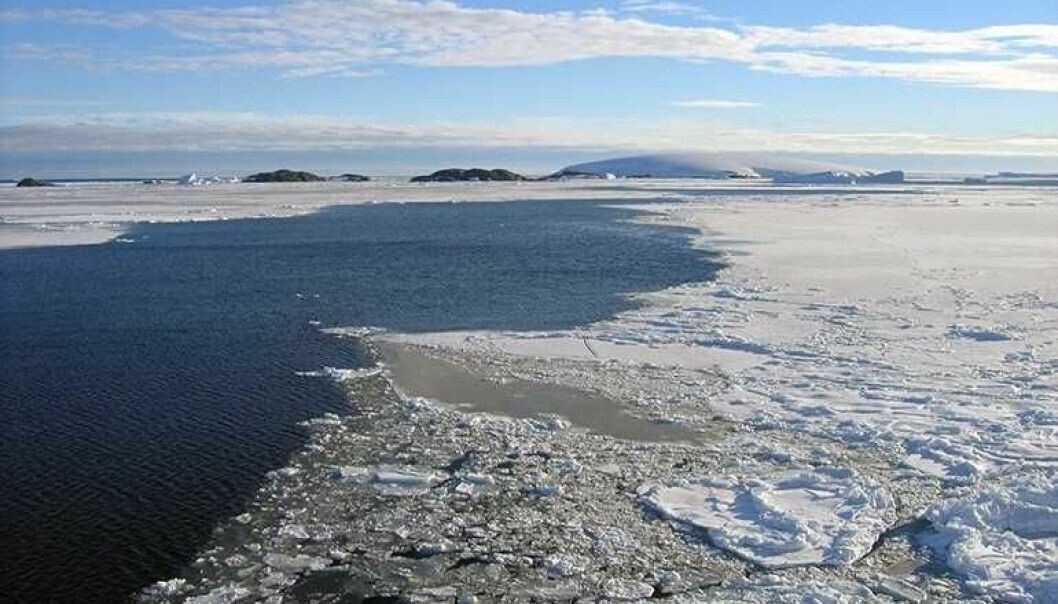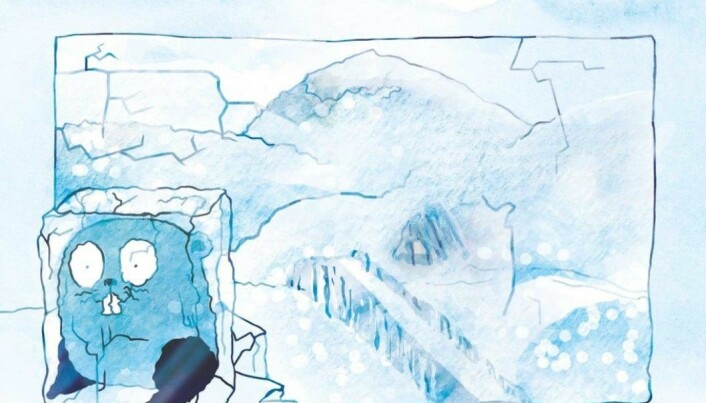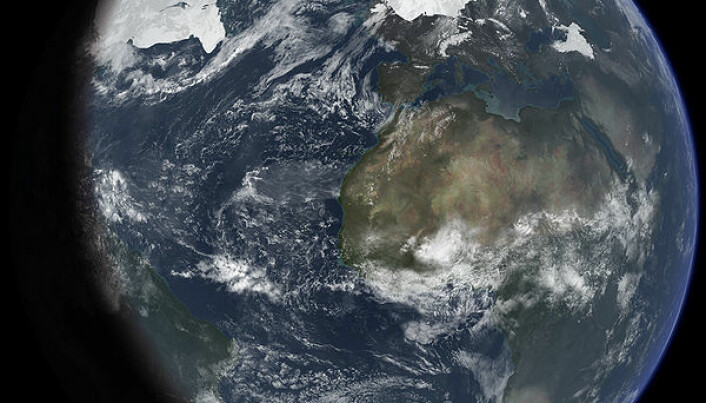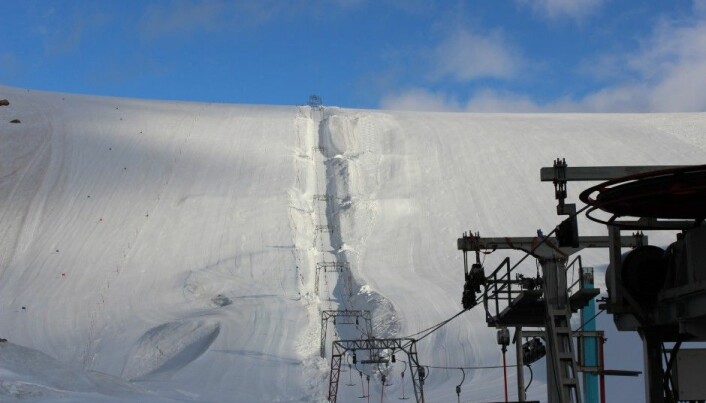Researchers from Norway and the UK have found evidence for ice-free corridors in the Arctic where life flourished during the Ice Age.

This is probably what the Arctic looked like during the Last Glacial Maximum, when large parts of Scandinavia were covered with ice. (Photo: By Ittiz - Own work, CC BY-SA 3.0)
Nancy Bazilchuk
based on an article by Elise Kjørstad
Monday 22. october 2018 - 06:25
The Arctic during the last ice age was essentially a desert. Land and ocean were both hidden under a thick sheet of ice. But scientists have long wondered if there were ice-free openings between land ice and sea ice, called polynyas, in which life could flourish.
Now, researchers from the Geological Survey of Norway, and the UK, report evidence of these ice-free gaps from 20,000 years ago, during what is called the Last Glacial Maximum.
The Last Glacial Maximum was a time when much of Europe was covered with thick ice, more than three kilometres thick in Norway. Ice stretched from the North Pole and across the entire Barents Sea and over large parts of the Norwegian Sea. This environment was not particularly hospitable to plants or animals.
But life appears to have persisted in long, narrow, ice-free gaps at the meeting between land and sea ice.
Several hundred kilometres long

ILLUSTRATION: Arctic oasis in front of the NW Eurasian ice sheet during the last Ice Age, 20.000 years ago (from Knies et al. 2018, Nature Communications/Irene Lundquist)
The researchers relied on sediment samples taken from a long stretch of ocean extending from the southwestern Barents Sea, north to Svalbard and beyond, and then eastwards. The researchers used dating techniques to determine the age of the sediments and then examined the contents of the samples. They looked for signs of life, such as small sea creatures and algae.
The researchers found many biological remains as evidence of life, showing that there must have been ice-free openings or polynyas where the sea ice met the land. This ice-free corridor must have stretched for hundreds of kilometres and existed for more than 5,000 years.
"By finding chemical fossils of algae that live in the open ocean and in sea ice, we have shown that polynyas must have existed during the last ice age," said Simon Belt, professor of chemistry at Plymouth University, UK, in a press release from Norway's geological survey.
The findings have now been published in Nature Communications.
The Sun’s rays as the source of life
Jochen Knies from the Geological Survey of Norway and the Center for Arctic Gas Hydrate, Environment and Climate at The Arctic University of Norway, led the Norwegian side of the study. He said these open passages were of great importance in allowing life to survive in the Arctic during the last ice age.
"When the ocean is covered with ice, sunlight can’t penetrate through the ice cover, which creates very difficult conditions for organisms to survive. And the land was covered with kilometres of ice in all directions— it was like a desert,” Knies says.
The ice-free areas were able to foster life on a microscopic scale, which in turn would form the basis for an ecosystem and other types of life, he says.
It was likely that seals, walrus and polar bears hunted for food in these ice-free passages, which made it possible for them to survive the Last Glacial Maximum.
The researchers don’t know if there were also polynyas along Norway’s rugged coast, since they did not examine sediment cores from the area. But it is certainly possible, they say.
Wind and warmer water
Polynyas form with the help of strong winds that blow from the land to the sea, combined with ocean circulation that brings warm water to the ocean’s surface.
"Winds that form over big inland ice masses can blow sea ice away. At the same time, we know there was a warm water current that flowed north during the ice age,” says Knies.
Today, polynyas are quite common around the North Pole and Greenland.
"We see these oases forming regularly, and with them, an explosion of life,” he says.
But global warming has made for an opposite situation in the Arctic, something the researchers also addressed in their article.
When the ice sheets began melting catastrophically at the end of the ice age, the sudden influx of fresh water halted the formation of polynyas, marine productivity dropped drastically, and the sea ice covered the entire Nordic Seas. This dramatic drop in productivity didn’t recover for roughly 2,000 years, they write in the study.
In the press release, the research is described as demonstrating the vulnerability of marine ecosystems in the northern oceans to periods of rapid climate change, but also their adaptability to various extreme climate states.
----------------
Read more in the Norwegian version of this article at forskning.no
Scientific links
Jochen Knies m.fl: Nordic Seas polynyas and their role in preconditioning marine productivity during the Last Glacial Maximum. Nature Communications, 27. september 2018. doi: 10.1038/s41467-018-06252-8.
External links
Jochen Knies
Related content

How the last ice age changed Norway
Researchers are learning more about what happened when several thousand metres of ice covered Norway roughly 10 000 years ago.

Life after the Ice Age
Life after the last Ice age was hard, say the archaeologists who dig for clues about the first settlers in Northern Norway.

Danish pollen reveals new interglacial period
New analysis of rare Danish soil layers reveals a hitherto unknown temperate period during the Ice Age.

Tiny gravitational changes indicate loss of glacial ice
Researchers have discovered by chance that the ice of the Folgefonna Glacier has thinned by seven metres.
No comments:
Post a Comment